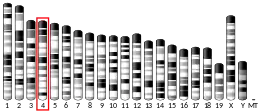ACO1
Aconitase 1, soluble is a protein that in humans is encoded by the ACO1 gene.[5]
| ACO1 | |||||||||||||||||||||||||||||||||||||||||||||||||||
|---|---|---|---|---|---|---|---|---|---|---|---|---|---|---|---|---|---|---|---|---|---|---|---|---|---|---|---|---|---|---|---|---|---|---|---|---|---|---|---|---|---|---|---|---|---|---|---|---|---|---|---|
| |||||||||||||||||||||||||||||||||||||||||||||||||||
| Identifiers | |||||||||||||||||||||||||||||||||||||||||||||||||||
| Aliases | ACO1, ACONS, HEL60, IREB1, IREBP, IREBP1, IRP1, aconitase 1 | ||||||||||||||||||||||||||||||||||||||||||||||||||
| External IDs | OMIM: 100880 MGI: 87879 HomoloGene: 1657 GeneCards: ACO1 | ||||||||||||||||||||||||||||||||||||||||||||||||||
| |||||||||||||||||||||||||||||||||||||||||||||||||||
| |||||||||||||||||||||||||||||||||||||||||||||||||||
| |||||||||||||||||||||||||||||||||||||||||||||||||||
| |||||||||||||||||||||||||||||||||||||||||||||||||||
| |||||||||||||||||||||||||||||||||||||||||||||||||||
| Wikidata | |||||||||||||||||||||||||||||||||||||||||||||||||||
| |||||||||||||||||||||||||||||||||||||||||||||||||||
Function
The protein encoded by this gene is a bifunctional, cytosolic protein that functions as an essential enzyme in the TCA cycle and interacts with mRNA to control the levels of iron inside cells. When cellular iron levels are high, this protein binds to a 4Fe-4S cluster and functions as an aconitase. Aconitases are iron-sulfur proteins that function to catalyze the conversion of citrate to isocitrate. When cellular iron levels are low, the protein binds to iron-responsive elements (IREs), which are stem-loop structures found in the 5' UTR of ferritin mRNA, and in the 3' UTR of transferrin receptor mRNA. When the protein binds to IRE, it results in repression of translation of ferritin mRNA, and inhibition of degradation of the otherwise rapidly degraded transferrin receptor mRNA. The encoded protein has been identified as a moonlighting protein based on its ability to perform mechanistically distinct functions. Alternative splicing results in multiple transcript variants.[5]
References
- GRCh38: Ensembl release 89: ENSG00000122729 - Ensembl, May 2017
- GRCm38: Ensembl release 89: ENSMUSG00000028405 - Ensembl, May 2017
- "Human PubMed Reference:". National Center for Biotechnology Information, U.S. National Library of Medicine.
- "Mouse PubMed Reference:". National Center for Biotechnology Information, U.S. National Library of Medicine.
- "Entrez Gene: Aconitase 1, soluble".
External links
- Human ACO1 genome location and ACO1 gene details page in the UCSC Genome Browser.
Further reading
- Wang W, Di X, D'Agostino RB, Torti SV, Torti FM (Aug 2007). "Excess capacity of the iron regulatory protein system". The Journal of Biological Chemistry. 282 (34): 24650–9. doi:10.1074/jbc.M703167200. PMID 17604281.
- Martelli A, Salin B, Dycke C, Louwagie M, Andrieu JP, Richaud P, Moulis JM (Feb 2007). "Folding and turnover of human iron regulatory protein 1 depend on its subcellular localization". The FEBS Journal. 274 (4): 1083–92. doi:10.1111/j.1742-4658.2007.05657.x. PMID 17244191. S2CID 8412580.
- Hu J, Connor JR (Aug 1996). "Demonstration and characterization of the iron regulatory protein in human brain". Journal of Neurochemistry. 67 (2): 838–44. doi:10.1046/j.1471-4159.1996.67020838.x. PMID 8764614. S2CID 35872879.
- Popovic Z, Templeton DM (Jun 2007). "Inhibition of an iron-responsive element/iron regulatory protein-1 complex by ATP binding and hydrolysis". The FEBS Journal. 274 (12): 3108–19. doi:10.1111/j.1742-4658.2007.05843.x. PMID 17521334. S2CID 22629034.
- Wang J, Fillebeen C, Chen G, Biederbick A, Lill R, Pantopoulos K (Apr 2007). "Iron-dependent degradation of apo-IRP1 by the ubiquitin-proteasome pathway". Molecular and Cellular Biology. 27 (7): 2423–30. doi:10.1128/MCB.01111-06. PMC 1899896. PMID 17242182.
- Liu CY, Liu YF, Zeng L, Zhang SG, Xu H (Apr 2007). "[The expression of TfR1 mRNA and IRP1 mRNA in the placenta from different maternal iron status]". Zhonghua Xue Ye Xue Za Zhi = Zhonghua Xueyexue Zazhi. 28 (4): 255–8. PMID 17877204.
- Zimmer M, Lamb J, Ebert BL, Lynch M, Neil C, Schmidt E, Golub TR, Iliopoulos O (Apr 2010). "The connectivity map links iron regulatory protein-1-mediated inhibition of hypoxia-inducible factor-2a translation to the anti-inflammatory 15-deoxy-delta12,14-prostaglandin J2". Cancer Research. 70 (8): 3071–9. doi:10.1158/0008-5472.CAN-09-2877. PMC 2861799. PMID 20354189.
- Gu JM, Lim SO, Oh SJ, Yoon SM, Seong JK, Jung G (May 2008). "HBx modulates iron regulatory protein 1-mediated iron metabolism via reactive oxygen species". Virus Research. 133 (2): 167–77. doi:10.1016/j.virusres.2007.12.014. PMID 18262302.
- Popovic Z, Templeton DM (Oct 2004). "Iron accumulation and iron-regulatory protein activity in human hepatoma (HepG2) cells". Molecular and Cellular Biochemistry. 265 (1–2): 37–45. doi:10.1023/b:mcbi.0000044313.19574.c6. PMID 15543932. S2CID 19363206.
This article incorporates text from the United States National Library of Medicine, which is in the public domain.



